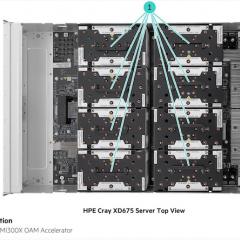
The University of Queensland’s new supercomputer, Bunya, is expected to be up and running within the month.
First estimated to become operational in July, hardware supply chain issues delayed Bunya’s installation in the Polaris Data Centre in Springfield, Queensland, where UQ high-performance computers (HPCs) Tinaroo and FlashLite are also housed.
All Bunya hardware has now been installed and connected, and the HPC’s high-speed internal network, linking its nodes together, is operational.
RCC Chief Technology Officer Jake Carroll said the RCC team is currently deploying software on Bunya.
“This phase involves installing the operating systems on the nodes, basic system tools, setting up the scheduler (SLURM) and authentication, so that users can securely log in,” Jake said.
“This phase also involves readying the modules and a first cut of commonly used HPC applications so that researchers can run familiar codes and compile their software, once on Bunya.”
The HPC will use novel methods of software deployment and management to allow for flexibility and ease of operation for researchers.
Bunya, bought from Dell Technologies, will soon be ready for testing by a small group of users that RCC has selected.
The HPC can perform across a wide range of research domains, from the sciences to the humanities.
Bunya, named after the native South-East Queensland tree, will be faster, more efficient and multifaceted than UQ’s current HPCs.
It will replace three of UQ’s older HPCs, Awoonga, FlashLite and Tinaroo, having served the University for almost seven years.
Awoonga was decommissioned in March, FlashLite will be shut down once Bunya has been tested, and Tinaroo later this year.
Wiener, UQ’s four-year-old imaging-intensive, GPU-enhanced supercomputer, will continue to operate.
UQ has allocated funding to expand Bunya’s capabilities and capacity over the next few years, so the single system should be a sufficient replacement for the three HPCs.
Bunya will be available for UQ researchers and some QCIF member researchers.
The new HPC was funded by UQ with contributions from the Institute for Molecular Bioscience (IMB), the Australian Institute for Bioengineering and Nanotechnology (AIBN), and QCIF.
Bunya is optimised for local users and campus infrastructure. It will start out as a traditional central processing unit (CPU)-based supercomputer with a number of high-memory capacity nodes for special uses.
Subsequent upgrades of Bunya will likely add different node types, such as high-performance accelerators, including GPUs.
RCC’s Metropolitan Data Caching Infrastructure (MeDiCI) data fabric will allow research data collections to be accessed transparently via all UQ HPCs, including Bunya.
Read our previous article about Bunya, published 6 June 2022.



